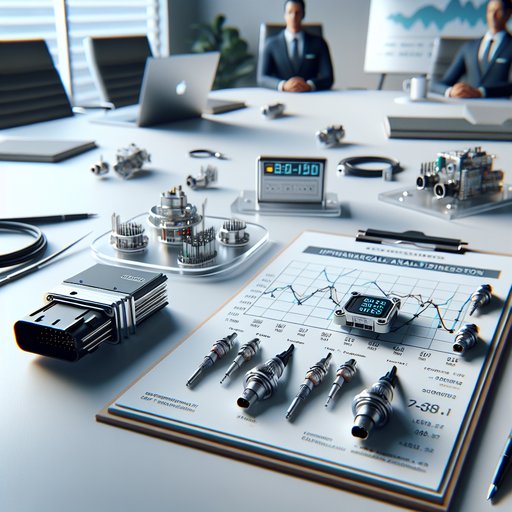
Lear Corporation (LEA) enters late 2025 with mixed signals for the next three years. Revenue is essentially flat year over year, with trailing sales of 22.89B, while profitability is thin at a 2.05% margin. After a sharp spring sell‑off and a summer rebound, the stock remains range‑bound as investors parse Q3 updates, a renewed electrification push, and a deepening partnership with a major North American OEM. What changed is the balance between stable vehicle builds and ongoing price‑down pressure from automakers: input costs and program transitions continue to constrain margins, but cash generation and disciplined capital returns help steady the story. The “why” is straightforward—auto suppliers are seeing normalization in supply chains and fewer shocks, yet competition in seating and electrical systems stays intense, forcing continuous productivity gains. For investors, this matters because the path of margins and content per vehicle will likely drive multiple expansion or compression more than unit volumes. Sector‑wide, the supplier universe is consolidating and pivoting to EV architectures, making execution on software‑rich electrical systems just as important as classic seating scale.

Aptiv enters late‑2025 with a clearer set of signals for the next three years: the stock recovered from a spring sell‑off to hit a one‑year high after a revenue beat and analyst upgrades, while fundamentals remain mixed. Trailing‑twelve‑month revenue stands at 19.79B, but earnings volatility and modest growth point to uneven demand and program timing. Operating margin of 11.00% underscores solid cost discipline in wiring, connectors, and active safety, yet quarterly earnings swings flag limited pricing power with automakers and potential one‑offs. The move reflects a sector backdrop where European EV adoption is rising even as the broader car market stalls, and major suppliers are cutting costs and refocusing. For investors, what changed is confidence in content‑per‑vehicle growth across high‑voltage, ADAS (driver assistance), and software‑defined vehicle programs; why it changed is a combination of execution on launches and improved sentiment; and why it matters is that sustained cash generation and backlog conversion will determine whether the multiple can expand as the EV/Safety cycle matures.

Enbridge (ENB) enters late 2025 with momentum in its core midstream and utility-like businesses, reflected in a sharp 31.20% year-over-year lift in quarterly revenue and a share price that recovered into early autumn before consolidating. The improvement likely stems from higher system throughput, inflation-linked tariff escalators, and contributions from recently added regulated assets, while signaling resilient demand for North American gas and liquids transport. For investors, the shift matters because cash generation is trending up just as balance sheet leverage remains elevated at 101.13B of total debt, keeping funding costs and refinancing terms central to the equity story. Midstream operators typically trade on the durability of contracted cash flows and the path of interest rates; ENB’s scale, diversified networks, and dividend reputation can support that profile if execution stays on track. The next phase is about translating operating gains into sustained free cash flow after dividends, measured by disciplined capital allocation, regulatory clarity, and timely project completions.

Chevron heads into late 2025 with steadier shares but softer growth, as top‑line and earnings momentum cooled from the prior cycle’s highs. Revenue stands at 189.27B on a trailing basis, with year‑over‑year declines reflecting normalized commodity prices and narrower refining margins. Strategy is tilting toward longer‑cycle gas and LNG, highlighted by a bid for Greek offshore blocks, while recent executive changes point to continued capital discipline and portfolio pruning. The drivers are largely macro—more balanced oil supply, moderating global growth, maintenance timing, and tightening downstream crack spreads—offset by resilient LNG demand and selective exploration. Why it matters: the equity story hinges on durable cash returns and execution on a focused project slate; the forward dividend yield of 4.51% helps anchor valuation, but elevated payout metrics raise the bar for flawless delivery if prices weaken. Sector‑wide, integrated energy sits in a later‑cycle phase where OPEC+ policy, the pace of the energy transition, and capital scarcity shape returns, putting a premium on balance‑sheet strength and advantaged LNG exposure.

BYD’s setup has shifted from pure volume momentum to a more nuanced balance between growth and profitability. Revenue is still expanding (quarterly growth of 14.00%) as the company scales exports and pushes deeper into Europe and other overseas markets, while domestic competition keeps pricing tight. The profit line is the swing factor: a slim 4.97% profit margin underscores how price cuts, model refresh cycles, and international ramp costs are weighing on earnings quality. What changed is not demand for electrified transport per se, but where growth is coming from and what it costs to win it: more overseas localization, higher go‑to‑market spend, and disciplined battery investment. This matters because the global electric‑vehicle sector is transitioning from early adoption to mass‑market share gains, where cost leadership, distribution, and regulatory navigation determine who converts scale into cash flow. BYD’s vertical integration in batteries and its localization moves could rebuild pricing power—if execution and policy conditions cooperate.
- Novo Nordisk: Obesity engine vs volatility – a three‑year outlook
- Fagron three-year outlook: steady growth, margin discipline and selective expansion
- UniCredit outlook to 2028: margin resilience, digital push and capital discipline
- Allianz (ALV.DE): Three‑year outlook as rates peak and underwriting steadies





